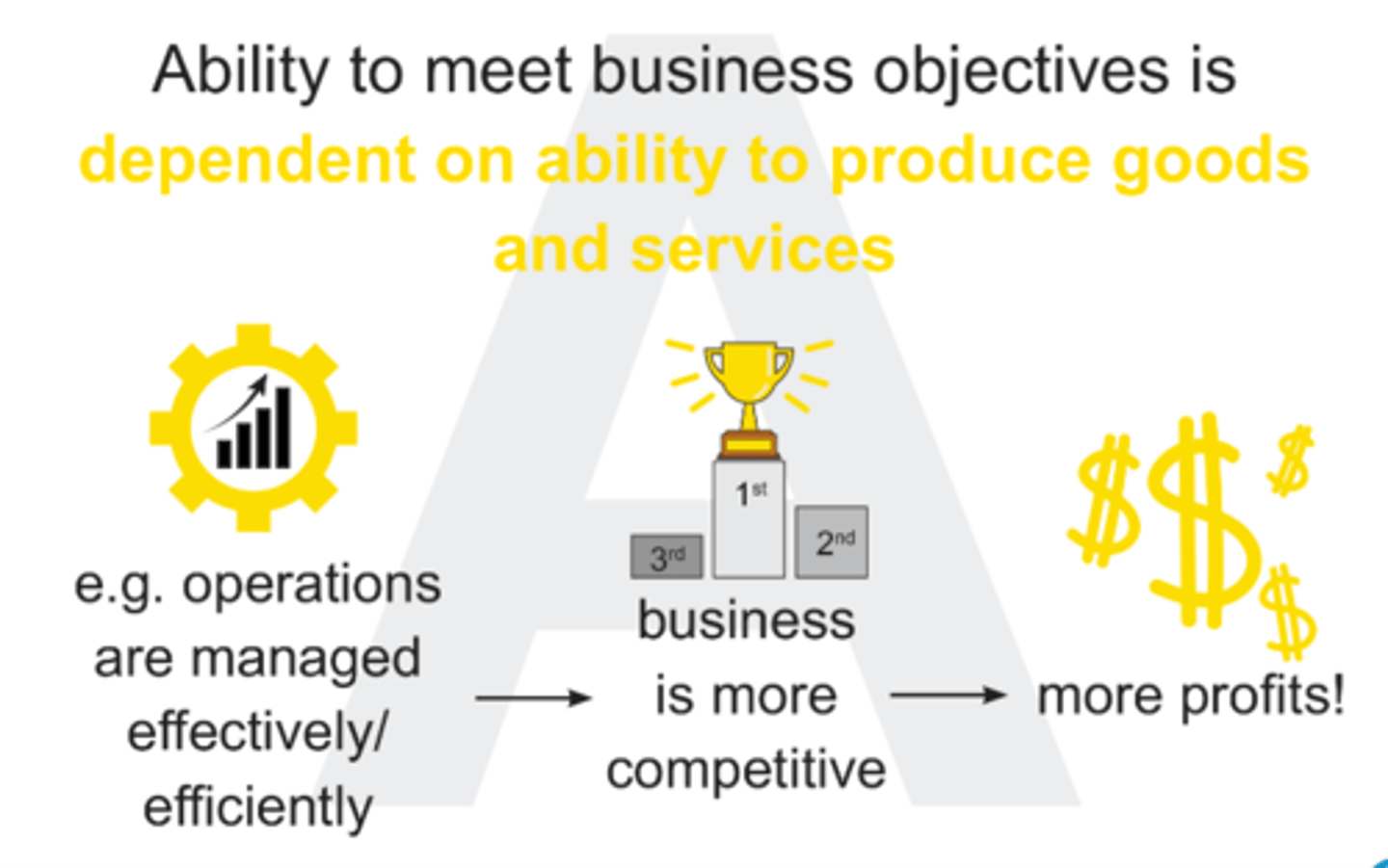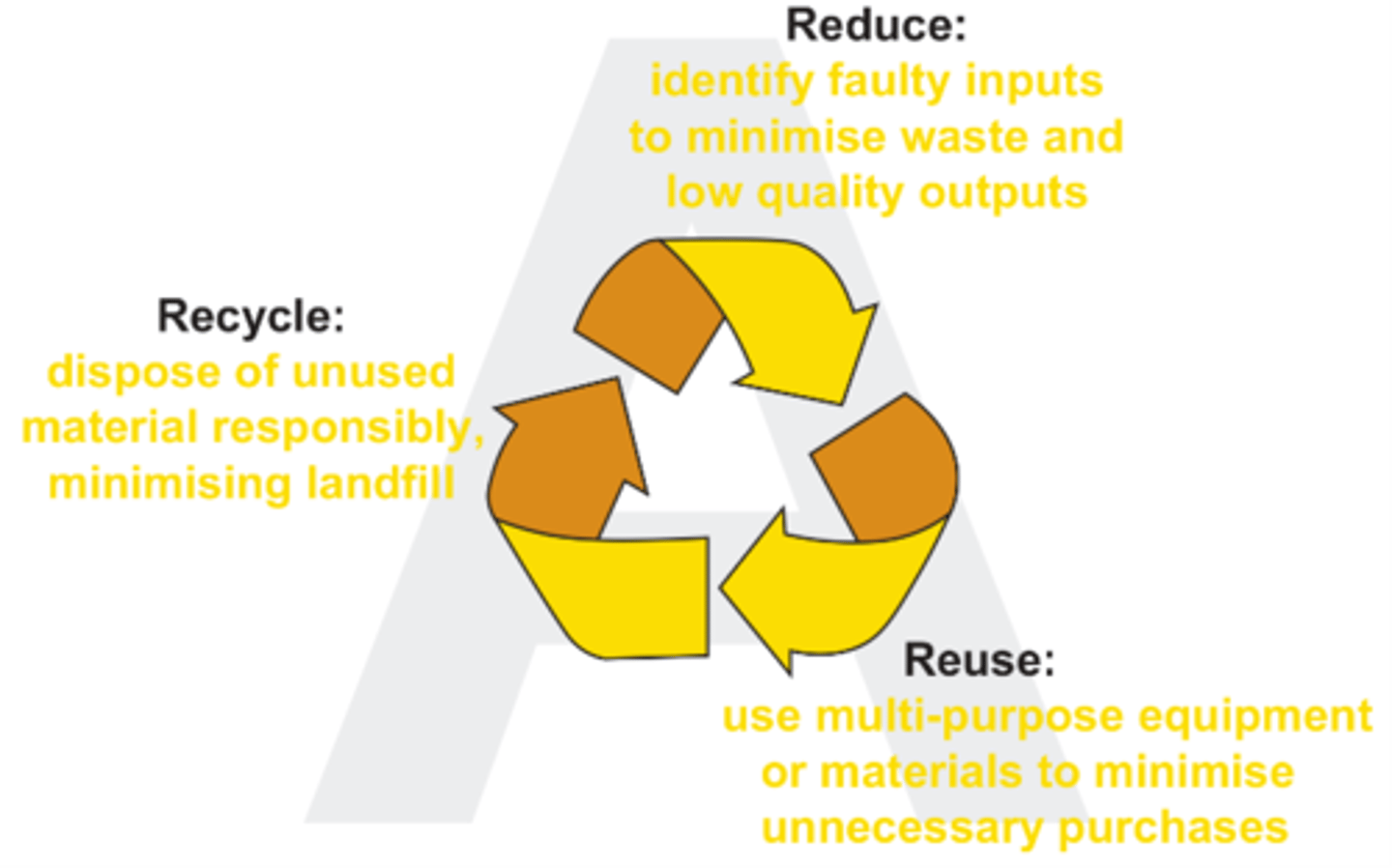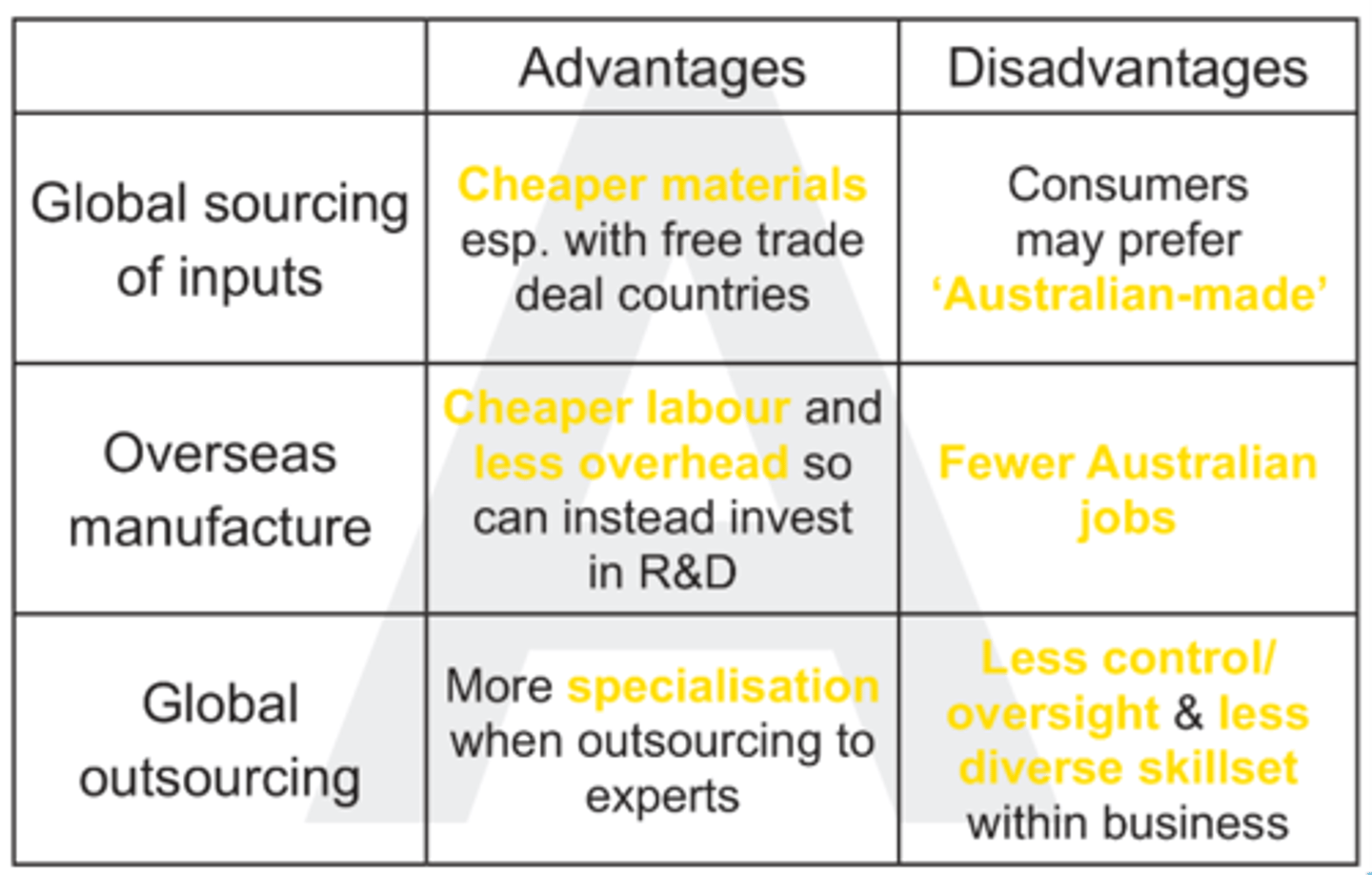U3 AOS 3: Operations
1/13
There's no tags or description
Looks like no tags are added yet.
Name | Mastery | Learn | Test | Matching | Spaced |
|---|
No study sessions yet.
14 Terms
Why is operations management important for meeting business objectives?

What are the 3 differences between manufacturing and service businesses?
· Manufacturing outputs are tangible whereas service outputs are intangible
· Manufacturing outputs need to be stored whereas service outputs do not
· In manufacturing, production and consumption are not linked whereas in service, the consumer has to be present
(e.g. consumer doesn’t have to wear a t-shirt after buying, but person must be present for haircut)
What are 3 advantages and 3 disadvantages to implementing new technology in a business?
Advantages:
· Increased economies of scale (less input required for more output)
· Reduced costs once implemented
· Opportunity for staff to learn new skills
Disadvantages:
· Expensive
· May break which can disrupt the entire business
· May replace jobs, leading to downsizing/redundancies
Explain how CAD/CAM and AI can improve operational efficiency in a business.
CAD/CAM: used to test design and manufacturing options (prototypes), saving time/effort and allowing businesses to improve outputs before production
AI: minimises human error by completing tasks quicker and more precisely/consistently than human capability – business can increase quality without increasing human labour, thus saving money
Why are online services beneficial for the operations of a business?
· Increase in potential market share
(e.g. anyone with internet access, not just anyone near a physical store)
· Provide more info to consumers
(e.g. FAQs, returns policy, items frequently purchased together)
· Marketing opportunities
(e.g. sign up to email list for discounts)
· More reliability/trust for customers
(e.g. live customer service chats, contact info)
How does the material management strategy of MPS increase operational efficiency?
Materials production schedule (MPS)
MPS: lists quantity and delivery date of outputs with lead times for input delivery – ensures correct productive capacity
How does the material management strategy of MRP increase operational efficiency?
Materials requirement planning (MRP)
MRP: lists all inputs required, inventory counts, and lead times of suppliers – ensures correct quantity of inputs are delivered on time
How does the material management strategy of JIT increase operational efficiency?
Just in Time approach (JIT)
JIT: all inputs arrive just when needed for production (not sitting in stock waiting) – reduces storage costs and risk of waste
How does the material management strategy of Forecasting increase operational efficiency?
Forecasting: uses past trends to predict future sales – supply matches demand, increases production effectiveness, minimises waste
How do quality control, quality assurance, and total quality management improve operational efficiency?
· QC: internal checks to ensure outputs meet benchmarks – reduces defects and waste
· QA: external audit to set standards for the business – reliable/proactive way to ensure high quality output
· TQM: business-wide commitment to improving quality outputs – comprehensive strategy that prioritises quality and increases competitiveness
How can businesses employ the reduce, reuse, recycle method of waste minimisation?

What are the 4 principles of lean management?
1. Pull: avoid overproduction by not overestimating demand
2. One piece flow: reduce unnecessary wait time to make production more efficient
3. Takt: match rate of production to customer demand in a timely manner
4. Zero defects: aim to prevent problems early to reduce waste
What corporate social responsibility elements should be considered for inputs, processes, and outputs?
Inputs:
· Purchase from ethical, environmentally sustainable suppliers
· Pay suppliers on time
Processes:
· Decent pay and OH&S for employees, not exploiting cheap overseas labour
· Fair treatment of customers and competitors
Outputs
· Disposing of waste ethically
· Making outputs beneficial, reliable, safe, and not misleading
Global operations considerations.
